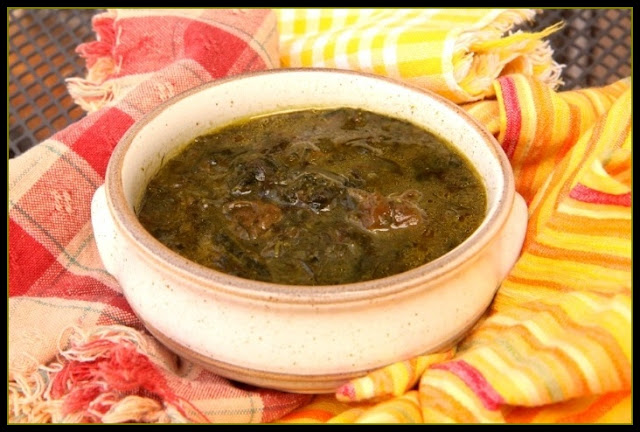Wild Things in July - Purslane
Welcome to Wild Things in July, where the featured plant for the month is beautiful yet humble purslane. It's true that there are flashier plants out there that I could have selected for July. But purslane is common, abundant, and quite versatile in the kitchen.
I have to admit that this month's selection also comes a bit out of necessity for me. My area is experiencing a drought, and a frightful number of forest fires. Purslane, the hardy little succulent, is one of the few foods that I know I can harvest and cook with throughout the month of July.
How to Identify Purslane
Purslane, also known as verdolagas, grows low to the ground in dense sprawling mats. Its paddle-shaped leaves are succulent. This means that if you break a leaf of purslane in half, it will look meaty and moist inside, like a tiny spineless cactus padal. In my area, the leaves are barely .5" long, but I've seen purslane in the Latin market with leaves that are nearly an inch long, so there is obviously some variability there. Immature stems are green, but mature purslane stems turn red. Purslane flowers are tiny and yellow. Purslane grows in damp to dry soil anywhere from lawns to fields to meadows. It is one of the most common garden "weeds," and is likely something either you or your neighbors has been trying to irradicate for years.
When you are seeking out purslane, as always, make certain you are picking from an area that hasn't been sprayed. Secondly, make sure the juices of the plant that you pick run clear. Purslane may be mistaken for an inedible plant that grows in the same habitats called spurge. The juices of spurge are milky. The juices of purslane are clear.
Eating Purslane
The leaves and stems of purslane are lightly tart and lemony, like sorrel. Unlike many summer plants, as purslane matures, its sour character mellows, and its leaves and stems remain tender.
When eaten raw, purslane is slightly crunch. It can be enjoyed in any number of salads and sandwiches. When cooked, purslane can add a pleasant tang to dishes. It can also be pickled. And because purslane is slightly mucilaginous, like okra, it can be used to thicken soups.
Are you new to Wild Things? Here's the scoop.
In many countries, traditional foods are prepared for their medicinal
effects. In most of these places, the foods prepared were wild foods
that were cheap and easy to obtain. By default, they were local and
seasonal. One of the problems with a lot of modern fad diets is that in
order to actually follow the diet, one needs to fork out a whole lot of
money. Most of us just can't afford to do that, especially not in this
economy! Not only that, but it seems might suspicious that, in many
cases, these products that are touted as panaceas have to come from half
way around the globe -- noni from Tahiti, acai from Brazil, gogii from
China. What are the odds that God (or the higher being of your choice)
put all of the good stuff in Tahiti, and left us to fend for ourselves
until the advent of globalization? Whether food or medicine, the
majority of what we need can be found locally. It might not be trendy,
but it will most probably be just as effective, if not more so. Wherever
you are, you have with your reach an untapped resource - wild foods!
Welcome to the Wild Things Round Up*
As your host, I'd like to demonstrate that eating wild foods doesn't
need to be a terrifying endeavor, and that our health and our diet
needn't be dictated by financial status or geographic location.
A Few Notes About the Round Up
1. Wherever you are, you have access to Wild Things, even if this means
clandestine trips to your neighbor's yard in the middle of the night**.
2. Foraging isn't only for hippies and luddites, though hippies and
luddites are both very much welcome (Hi, Hippie! Hi, Luddite!). It's
easy to assume that everyone who eats this way lives out in the wild,
and shuns the material world and/or technology. But it just isn't true!
This isn't a club exclusive to country mice. I live smack in the middle
of suburbia. I'm a very well adjusted modern woman who loves my life,
and happen to love nature as well.
3. This is not about trying to be a cave dweller. Though there are
plenty of people in the world who successfully and gracefully live a
life that is more similar to how people lived hundreds, or even
thousands of years ago. I'm not one of those people, and I'll assume
that for the most part, you are not either. It's easy to romanticize,
but that is a difficult, hard working life. It's also not necessary to
remove yourself from the modern world in order to be connected to
nature. When it comes down to it, isn't that what we all want a bit more
of -- connection, to nature, to community, to other people, to a higher
power? Nature is everywhere. Life is everywhere. It's not outside of
your touch. It's not only available to people who sacrifice modern
convenience. You do not need to give up your makeup or latte.
A Few Foraging Rules
1. DO NOT EAT ANYTHING THAT YOU CANNOT 100% IDENTIFY!!! I can't stress
the importance of this point. People can die from this sort of
stupidity. Let's not win any Darwin Awards here.
2. Know the foraging laws in your area. Call the city, call the forest
service, call the landowner. Respect private property. Ask permission.
Most people will gladly let you pull up some weeds for them. Most of
them are delighted to get rid of some of the fruit that rots all over
the pavement. Just ask.
3. Don't take more than you need. Never take rare plants. Learn what's
in your area -- only take things what are abundant. This is important!
Always think of the future, not just in terms of what you want, but in
terms of the ecology of the system from which you are harvesting. These
ecosystems have been around for millenia, since long before people got
there. Don't be the one to change that in one generation.
Tools You Will Need
1. Scissors and/or pocket knife
2. A local guidebook (don't be tempted to grab a national guide), with pictures
3. Bags for collecting food
How to Play
At the beginning of each month, I will introduce a new Wild Thing. I
will give pictures, descriptions, best locations, and taste, and also
list any possible toxicity issues. The plants that I feature will be
those with few, if any, toxic lookalikes. And if there are any, I'll
give you ample warning. None of the plants I select will have any
potential lethal lookalikes.
Over the course of the month, both you and I will go and find the
featured plant, play with it in the kitchen, and come up with creative
ways to use it. But don't feel like you need to invent a recipe in order
to participate. Feel free to tell about your experience using a known
recipe. But please do credit the originator of the recipe.
If you have a blog, post your recipe on your blog, and then share it
with Wild Things. Also, mine your archives, and link old recipes.
If you don't have a blog, you are still welcome to participate. Simply
introduce your recipe and experience with a few sentences, and then
share your recipe. A picture is always nice, too, although not necessary
to play along.
Before the end of the month (sooner is better, because your host has a
day job!), submit your recipe to wildthings.roundup@gmail.com . Please
send your recipe directly to that email address. If you send it to my
personal email, or post it on Facebook, I'm likely to forget it.
At the end of the month, I will provide a round up list of everyone's adventures. Sound like fun? I think so.
*No association with Monsanto.
** Just kidding. I don't advocate stealing. Really, there's no need -- a
knock on the door and a "Hey, I noticed that you have an apple tree
full of rotting apples. I was wondering, could I take a few of them, or
pay you for some of them, or mow your lawn for some of them?" will
suffice. Most people are horrified at the thought of taking money for
apples, and will drop big bags of them off on your front step for months
to come.
----------------------------------------------------------------



